THE “7-SECOND MAN” OF BED-STUY (1918)
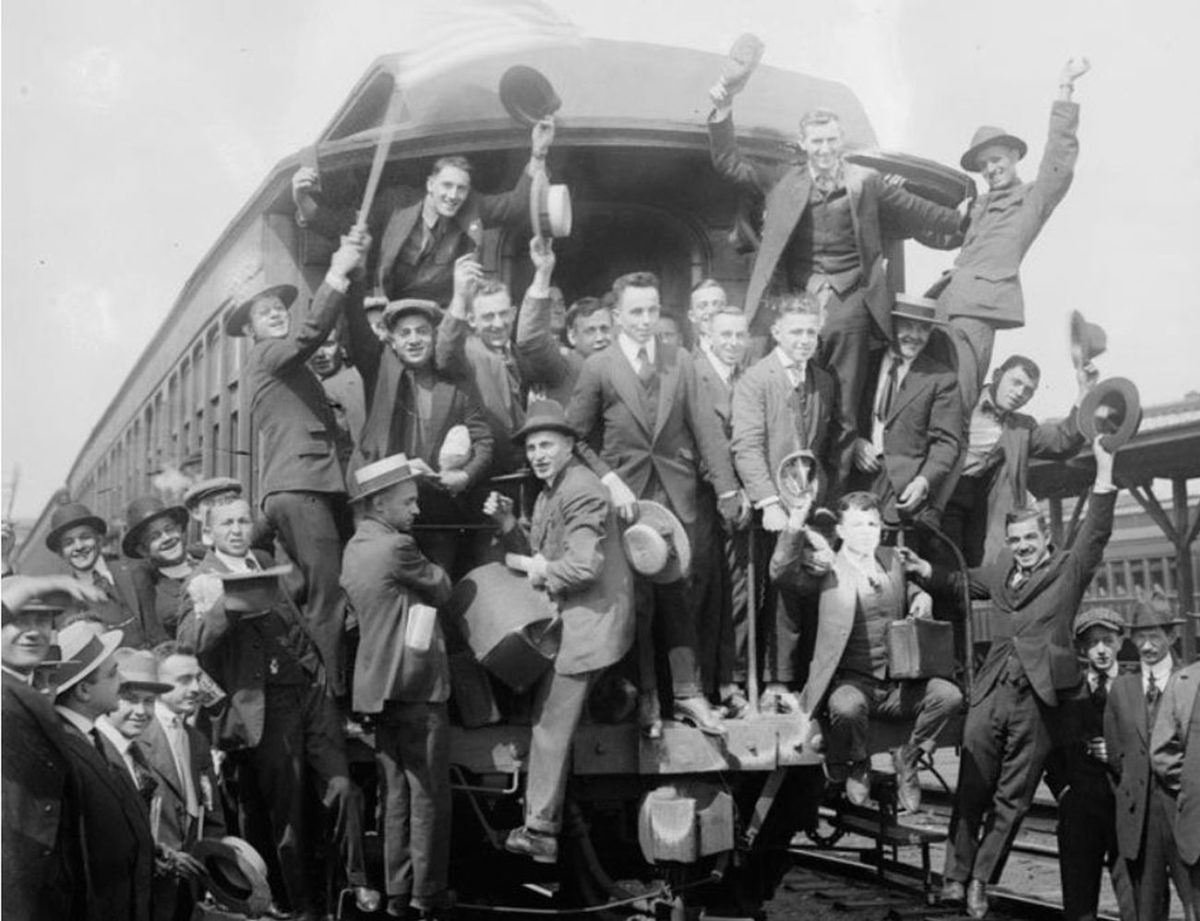
Brownstone Detectives investigates the history of our clients’ homes.
The story you are about to read was composed from research conducted in the course of one of those investigations.
Do you know the history of YOUR house?
********************************************************************************************************************************
 The new “Victory and Peace” war memorial at Saratoga Park, located in the Stuyvesant East section of Brooklyn, was the subject of a public dedication on 10 September 2014.
The new “Victory and Peace” war memorial at Saratoga Park, located in the Stuyvesant East section of Brooklyn, was the subject of a public dedication on 10 September 2014.
The Brownstone Detectives worked closely with the Parks Department by locating pictures, stories, and relatives of the Stuyvesant Heights men who gave their lives in the Great War.
This biography is about one of those men.
PRIVATE EDWARD J. BELL
In 1920, as the “War to End All Wars” was still fresh on America’s collective conscious, American Legion posts were sprouting up everywhere. The trend existed for two reasons: to support the men who had come back from the front, and to memorialize those who never returned. Many of the posts were named after those who had made the ultimate sacrifice.
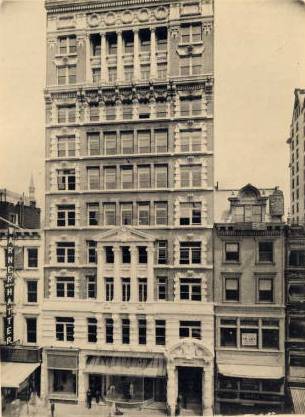
The Edward J. Bell Post No. 790 had recently been formed to honor Edward Joseph “Eddie” Bell, a 25-year-old machine-gunner, and Purple Heart winner, who died in France on 16 August 1918, from the result of injuries sustained in combat.
Born on 6 November 1892, Bell had lived with his father, his aunt and his grandparents at 735 Macon Street. Sometime around 1910, the tall, black-haired, and blue-eyed Bell had graduated from Commercial High School, and soon thereafter lost his father. His Aunt Henrietta, already like a mother to him, for all intents and purposes, would become his legal guardian.
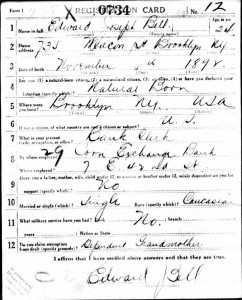
Sometime after graduating, he had found employment as a bank clerk in the Grand Central Branch of the Corn Exchange Bank located at No. 7 East 42nd Street. Around then, the World War was heating up, and President Wilson was promising America that he would keep America out of the conflict.
By 2 April 1917, though, after Germany had resumed its submarine attacks on American vessels, President Wilson was asking for a declaration of war. And after the Selective Service Act passed on 28 May 1917, young men began receiving their draft cards, requiring them to report for their examinations.
Bell was one of millions around the country who were asked to report to their local draft board to submit for an examination of fitness for combat. Arriving before the board at Public School No. 73 on 5 June, the 24-year-old was medically examined and, although he claimed as an exemption a “dependent grandmother,” he was subsequently accepted for military service.
THE “7-SECOND MAN”
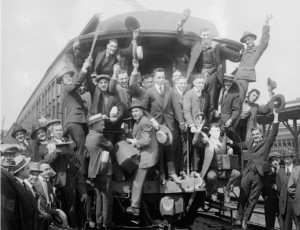
Upon Bell’s being found eligible for service, he was given a date and location to report for boot camp. Draftees from New York City were advised to report for a Long Island Railroad special train that would depart on a Sunday morning for Yaphank, Long Island, where Camp Upton stood, and where Irving Berlin and the soon-to-be-famous “Sgt. York” were notably processed.
Bell completed basic training at Camp Upton and then went on to train as a machine gunner. Before departing for the front, infantry soldiers would call him “suicide man” or “7-second man,” as statistics of the time determined that the average life of a machine gunner on the front was a mere seven seconds. Not a comforting thought, for sure.
When machine gun training ended, Bell was attached to Company A, 305th Machine gun battalion, Seventy-seventh Division, American Expeditionary Force. Also know as the “Metropolitan Division,” their insignia was a gold “Statue of Liberty” on a truncated triangle of flag blue. The majority of soldiers in this division were from New York, the with the enlisted men coming from New York City and Long Island.
Before shipping off, though, on 22 February, Washington’s Birthday, the Division paraded down 5th Avenue in New York City.
BELL SHIPS OFF FOR FRANCE
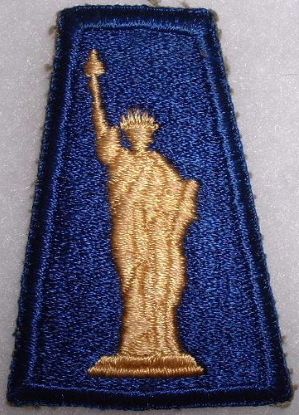
shoulder sleeve insignia
Finally, after a month of waiting for a departure date, Bell’s Division left Camp Upton on 28 March 1918. Due to German spies in the country, their ship took a circuitous route, sailing by way of Boston, Portland (Maine), Halifax, across to Liverpool, then finally to Calais and Brest, France.
Upon arrival in France, the division moved immediately to a training area behind the British front near St. Omer and, while being trained by the 39th British Division, they were held in reserve to meet an anticipated German attack against the channel ports which never materialized.
On 16 June 1918, the division made the 3-day trip by slow-moving train to the Baccarat sector, no one knowing exactly where they were bound. While there was speculation of guard duty on the Mediterranean, and certainly stories of Italy made their rounds, their train finally stopped in a small unknown French town. Two days of hiking followed, after which it was discovered that the 77th Division was going to occupy a quiet sector at the front, flanked by the 61st French Division and the 42nd American Division.
For about a week, the 77th Division moved into place on the line. The weather, sultry and rainy with low-hanging clouds of mist and fog, allowed the division free and safe use of trucks and motor transport, while all movements were completed additionally under the cover of darkness.
“GAS!!!”
Finally, after much waiting, on the morning of 24 June, the 77th Division came under mustard and phosgene gas shelling. While the sector that Bell’s unit was attached to, La Blette near Herbeviller, did not receive much concentrated shelling, there were random and scattered shots dropped throughout the area.
Although gas masks were quickly donned as the attack commenced, after approximately 3,000 rounds were fired into their positions, the 77th Division suffered 180 casualties.
In the end, Private Edward J. Bell had survived his first attack of the war.
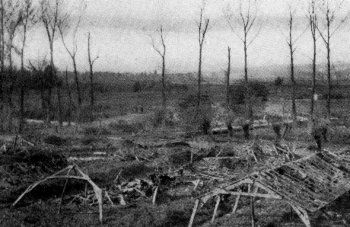
Bell’s Machine Gun Company did not come into direct action, though, until late July, when they were an important part of the defense in the sector. They had permanent emplacements from which they could, if called upon, sweep the whole of the enemy front. On alternate nights, each company would fire a barrage of approximately ten thousand rounds on established strong points. Several enemy machine gun nests were destroyed in this way.
Finally, on 1 August, the Division was on the move again. Having boarded trains again, rumor was rampant as to their destination. It began to dawn upon the men in the train cars as they passed signs for towns and villages that they were going west, and northwest, parallel with the front.
The 77th, it was excitedly determined, was on the way to real war.
As their train passed great hangars, elephantine railway guns on sidings, and French camps of all kinds, this theory became even more feasible. The Division was hurrying along on one of the great arteries that fed the front-line battlefields. Bell’s train passed hospital trains and trains with French soldiers coming and going at frequent intervals, and a hurried word shouted from one to the other showed the 77th Division that these men were battle-bound, too – and some of them were veterans of many fights.
Detrainment, after a ride of some 48 hours, was made by night. It was followed by the approach toward the Vesle Valley (near Reims). The impression of much of the country in those parts, to many of the men, was only blackness, for they hiked always by night.
“Lorraine was only a boxing match, but the Vesle, that was a real fist-fight,” was the epigram made by an officer of the 77th Division in speaking of the Vesle. “The Hell-hole Valley of the Vesle,” the doughboy soon learned to call it, from experience. At the Vesle, the 77th Division had its first real tussle with modern warfare, for it found itself face to face with the Prussian of the old days, the Boche.
BELL MOVES INTO “THE LINE”
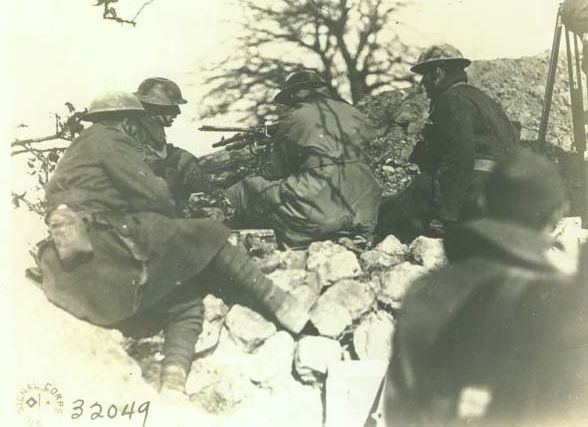
On 4 August, as the 77tth Division moved into the Vesle sector in the neighborhood of Fismes, they prepared to relieve the 153rd Infantry Brigade. Finally, on 11 August, when the relief had been effected successfully and the men had entered “the line,” they prepared for an attack on the German positions north of the River Vesle.
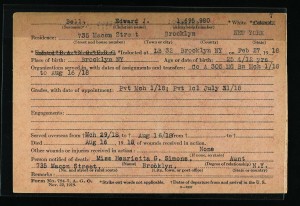
It was at this point that the men began to grasp an idea of the varied assortment of “stuff” sent over by the Boche – whizzbangs, minenwerfers, airplane bombs and machine guns, hand grenades, rifle bullets, flame-throwers and gas shells.
It was during these maneuvers, as Company A of the 305th Machine Gun Battalion was moving into place, on a hillside south of Villesavoye, that Edward J. Bell was injured. Probably the victim of a “whiz-banger” or a German sniper’s bullet, the young bank clerk from Brooklyn, just five days later, died in an Army hospital due to complications from his wounds.
BACK IN NEW YORK, A PARTY FOR BELL ON MACON STREET
Fast forward to two years later, on 15 September, and the American Legion Post named for Bell was having a block party on Macon Street between Ralph and Howard avenues. It was a picture-perfect, warm, fair, and clear 64-degree Wednesday evening.
The block party was being held to honor Bell, inaugurate the post, and to raise funds for the War Memorial to be placed in Saratoga Square. In an article in the Brooklyn Daily Eagle, about 40 neighbors o he block were listed as “patrons” of the party, and many sat on block party committees.
That evening, the block was “beautifully decorated with lanterns and flags of all nations and various booths” displayed “numerous articles to be sold.” The evening affair was opened with the Star Spangled Banner being sung, led by Bertha Leisenbein of 725 Macon Street. Music was rendered by the Ninth Coast Artillery Band.
BELL’S SERVICE IS MEMORIALIZED
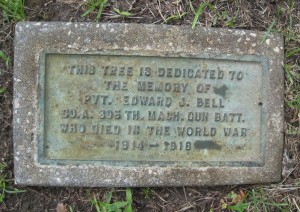
A year or two later, when the Memorial Tree Project was established to honor fallen soldiers, trees were planted and brass plates with soldiers’ names were placed at their bases all along Bedford Avenue. Private Bell’s nameplate was placed at a tree near Dean Street, where each year Post 790 would ceremoniously lay a wreath in remembrance of Bell.
By 1924, as the Bedford Subway was about to be built, soon to be upsetting the avenue and upending all of the trees, the Committee in charge of the Memorial Tree Project had to decide what action to take to ensure that the trees and nameplates were protected. The committee recommended the removal of the plates to Eastern Parkway.
Each family was sent a postcard informing them of the move, requesting their approval, or the suggestion of an alternative location for tree and plate. Bell’s Aunt Henrietta, who still lived at 735 Macon, requested that Bell’s plate be moved to Eastern Parkway, and specifically placed in front of No. 525, near the corner of Nostrand Avenue – where it sits to this day.
(To learn about the history of the “Victory & Peace” memorial, click HERE.)
———————————————————————————————————————–
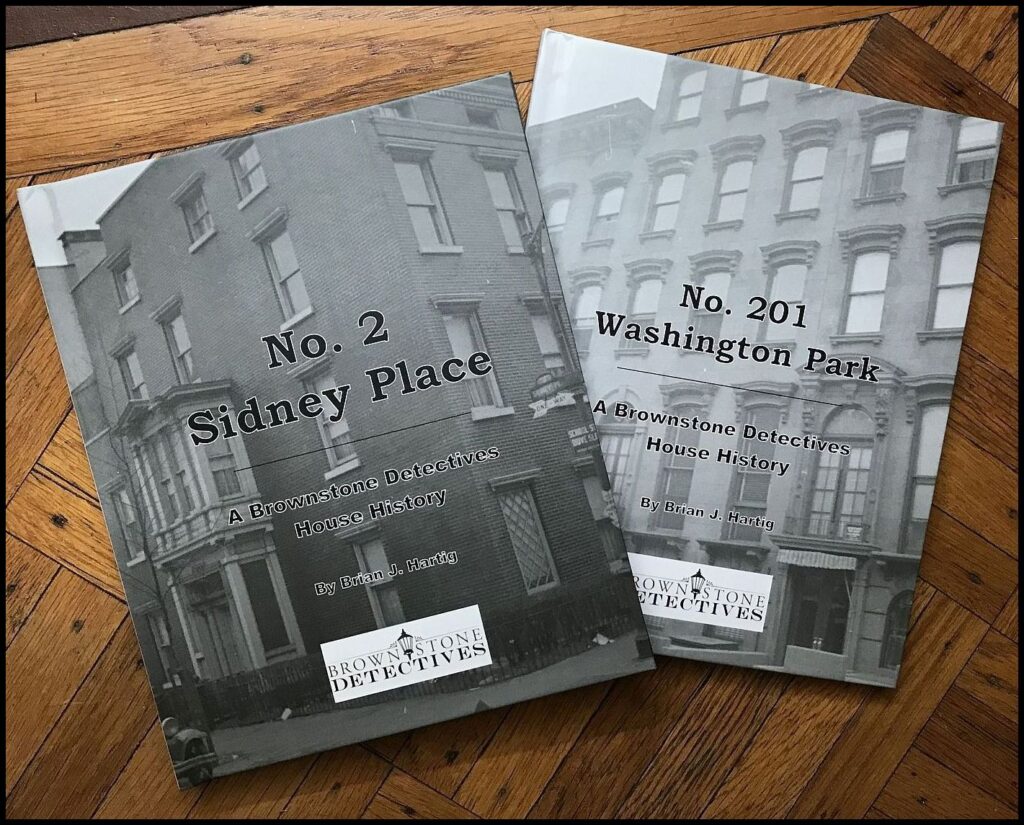 Brownstone Detectives is an historic property research agency. Our mission is to document and save the histories of our clients’ homes. From our research, we produce our celebrated House History Books and House History Reports. Contact us today to begin discovering the history of your home.
Brownstone Detectives is an historic property research agency. Our mission is to document and save the histories of our clients’ homes. From our research, we produce our celebrated House History Books and House History Reports. Contact us today to begin discovering the history of your home.
[…] was with Company B of the 305th Infantry. Along with fellow Stuyvesant Heights resident, Pvt. Edward J. Bell, who was with the 305th Machinegun Batallion, they traveled together throughout France and its […]